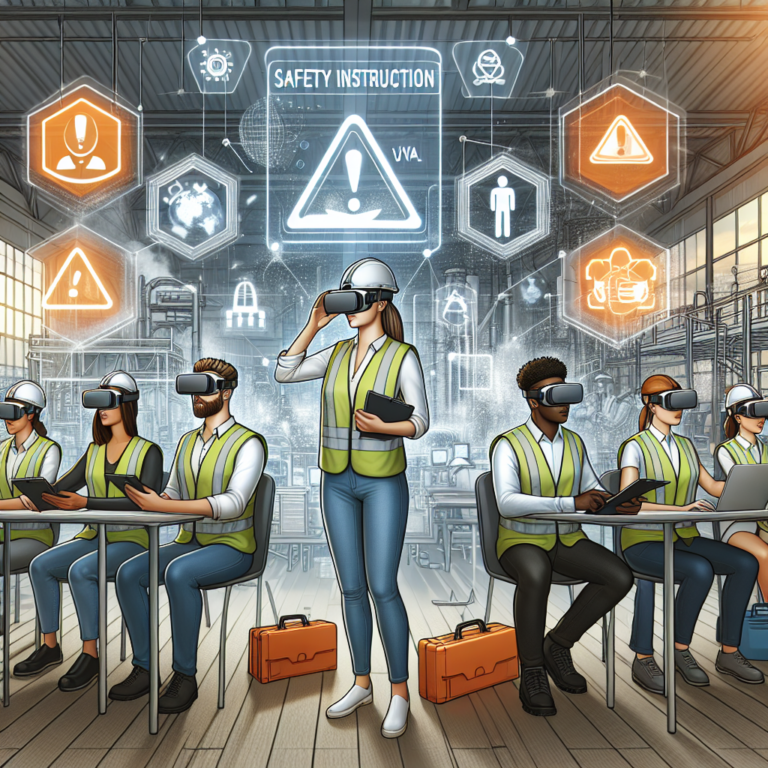Harnessing Immersive Technologies for Safer Work Environments: A New Era of Workplace Safety 🌟
The Rise of Immersive Technologies
In recent years, the landscape of workplace safety has evolved dramatically, thanks to the emergence of immersive technologies. From Virtual Reality (VR) to Augmented Reality (AR) and Mixed Reality (MR), these cutting-edge tools are not only enhancing our experience but are also playing a crucial role in creating safer work environments. By simulating real-life scenarios, immersive technologies are revolutionizing the way we approach safety training and risk management. 🌐
What Are Immersive Technologies? 🤔
Immersive technologies encompass a range of advanced digital tools that engage users in interactive experiences. Let’s take a closer look at the main types:
- Virtual Reality (VR): Fully immersive experiences that transport users to a digital environment, isolating them from the real world.
- Augmented Reality (AR): Overlays digital information onto the real world, enhancing the user’s understanding of their surroundings.
- Mixed Reality (MR): Blends both virtual and real-world elements, allowing users to interact with digital content as if it existed in their physical space.
Enhancing Safety Training Through Virtual Reality 🎮
One of the most profound applications of immersive technology in the workplace is in safety training. Traditional training methods often involve lengthy manuals and static presentations, which can fail to engage employees. In contrast, VR training experiences immerse employees in realistic scenarios that prepare them for emergencies without putting them at risk. Here’s how:
- Realistic Simulations: VR can create lifelike simulations of hazardous situations, allowing workers to practice their responses in a safe environment.
- Enhanced Retention: Studies show that immersive learning can increase knowledge retention by up to 75%, making safety protocols more memorable.
- Safe Environment: Trainees can experience high-risk scenarios without any physical dangers, reducing anxiety during real-life crises.
Augmented Reality for Immediate Hazard Awareness ⚠️
While VR is excellent for training, AR excels in real-time assistance. By overlaying critical information, AR can enhance a worker’s awareness of potential hazards. Here’s how it’s making a significant impact:
- On-the-Spot Guidance: AR devices can provide instant instructions or warnings while workers are on-site, keeping them informed about safety measures.
- Visual Identification: Workers can scan their environment using AR glasses to identify potential hazards, with visual cues guiding them on the necessary precautions.
- Maintenance Aid: AR can assist technicians by showing them the safest procedures for repairs and maintenance, reducing the risk of accidents.
Mixed Reality: Bridging the Gap Between Training and Reality 🛠️
Mixed Reality (MR) combines the best of both worlds, making it a powerful tool for creating safer work environments. MR allows users to interact with both physical and virtual elements, providing a unique advantage:
- Collaborative Learning: Teams can engage in practical learning experiences where they collaborate on safety tasks, practicing scenarios that require teamwork.
- Real-Time Feedback: As users interact with MR environments, they can receive immediate feedback on their actions, allowing them to adjust and learn in real-time.
- Scenario Planning: Safety managers can run various scenarios during training sessions, helping teams to think critically about how to handle unexpected situations.
Case Studies: Immersive Technologies in Action 📊
Several companies across industries are already leveraging immersive technologies to improve workplace safety. Here are a few notable examples:
- Construction Industry: A major construction firm implemented VR training for their workers, resulting in a 40% reduction in workplace accidents during the first year.
- Manufacturing Sector: A leading manufacturing company employed AR solutions to assist machine operators, which improved process efficiency and safety compliance by 30%.
- Healthcare Field: A hospital utilized MR simulations for emergency response training, significantly improving staff preparedness for real-life crisis situations.
The Future of Workplace Safety with Immersive Technologies 📈
As immersive technologies continue to advance, their capabilities in fostering safe work environments will only grow. Companies looking to maintain a competitive edge should consider integrating these tools into their safety protocols. Some future developments to look out for include:
- AI Integration: Combining AI with immersive technologies can provide personalized training experiences tailored to individual users’ needs.
- Gamification: Making training fun through gamified experiences can further increase engagement and retention.
- Data Analytics: Utilizing data collected during immersive training can help companies identify areas for improvement in safety protocols.
Final Thoughts: Embracing Immersive Technologies for a Safer Tomorrow 🔮
The integration of immersive technologies in the workplace is not merely a trend; it is a revolutionary step toward establishing safer work environments. As businesses continue to adopt these innovative solutions, the potential to reduce accidents, enhance training, and improve overall workplace safety becomes increasingly tangible. The future is promising, and by harnessing the power of immersive technologies, we can create a safer, more efficient, and more engaged workforce.




0 Comments